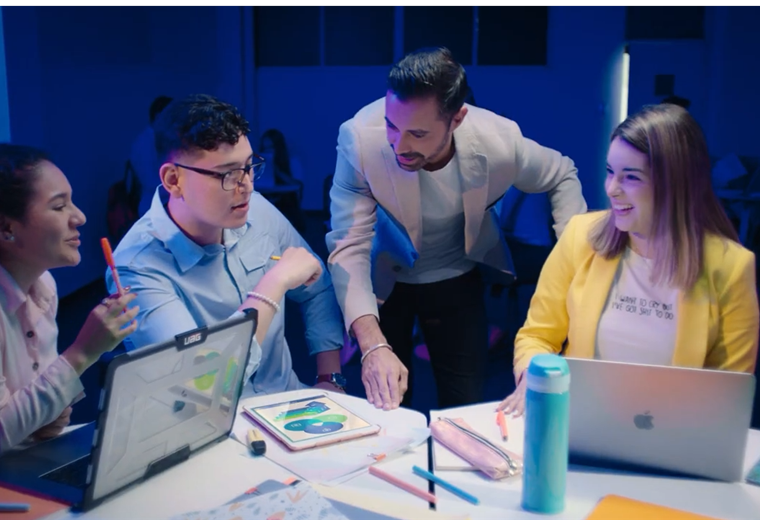Calculus or microeconomics applied to real life? Assertive communicator finds ways to awaken students’ interest and understanding in hard mathematics or science. By applying this knowledge in real life, we seek to avoid dismissiveness of these topics.
Students face difficulties in topics such as accounting, macroeconomics, financial statement analysis, etc. For Andrea Cisneros, Director of the Business Engineering Program at Unifranz, assertive communication is the essential tool that teachers must master in order to be able to connect with young people.
“Assertive communication helps us make these difficult topics no longer so. For example, when we apply topics to our experience that develop calculus or microeconomics; we will learn how to formulate this numerical knowledge for student understanding.”
Often, you can find different types of learning in the same classroom, and for assertive communication to be truly direct and achieve the goals for which it was created, different methodologies must be applied according to the abilities of the students. With them, students’ understanding can be achieved.
Developing teaching practice does not consist of following a plan of action to the letter; On the contrary, he has the ability to make adjustments that are compatible with the needs of the group. This way they will ensure that students have the necessary skills to develop. Where in every situation or problem that arises, you can use your acquired skills to find an answer or solution.
“Teachers guide and guide students in their learning process. Furthermore, we are role models in the educational environment and are responsible for creating a positive and tolerant environment that promotes learning.”
What is assertive communication?
Assertive communication is a pedagogical strategy for improving relationships between teachers and students. The teacher should encourage students to apply or use the acquired knowledge repeatedly to reinforce it, handle it easily and transfer it to everyday life situations. This way the young person will find meaning in what he has learned.
Another advantage is that it provides the teacher with the opportunity to identify students’ misconceptions in order to work on them and modify them. This will be achieved through timely monitoring and feedback.
In this process, the academic explains that they use different “tools” that help lay the foundations for assertive communication e.g Storytelling (tell a story) and com. storyduing (learning via application). “These tools help us create different types of communication and say things. Moreover, the development of expressions and gestures accompanies 80% of the communication chain for which transmission is created.
What are the results?
The first main goal is to raise awareness of the importance of these topics and for teachers to become empathetic. “We see that they begin to develop different lines of communication through which they express themselves, because by learning these new forms of relationships they begin to practice and implement them in their daily lives.
“In order to have good and assertive communication, we must learn how to cultivate active listening, and this will help us give back comment More successful and achieving a mutual relationship has the balance to achieve goals.
Read also
Education and society
Dyslexia: A disorder that makes learning difficult and affects one in 10 schoolchildren
Dyslexia is a major learning disability, along with dyscalculia, dysgraphia, dysarthria, attention deficit hyperactivity disorder, and high-functioning autism spectrum disorder (Asperger’s syndrome) that affects academic performance.

:quality(85)/cloudfront-us-east-1.images.arcpublishing.com/infobae/TEQF6EONZRFGLLLDIDD4L2O4EE.jpg)

:quality(75)/cloudfront-us-east-1.images.arcpublishing.com/elcomercio/XU32LRAEZFDDPNVHLFU3CKVBYY.jpg)




More Stories
Venezuela ranks fourth in female leadership in science and technology in Latin America
In Portuguesa and Sucre they explore the wonderful world of science
The university court overturns the expulsion of two teachers and a chemical sciences student